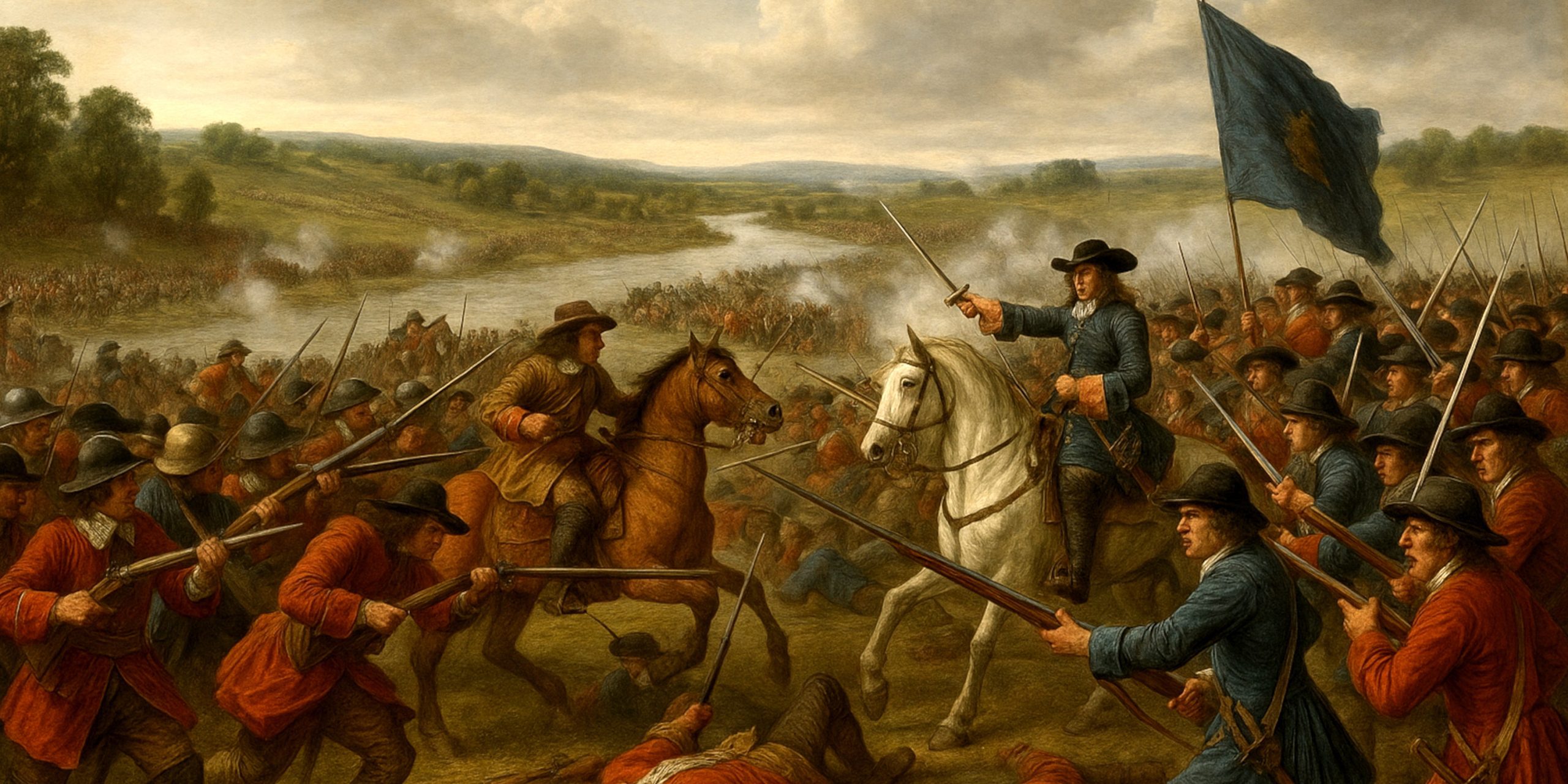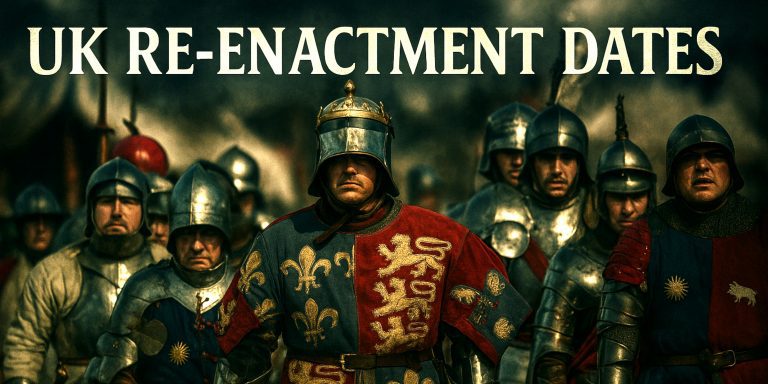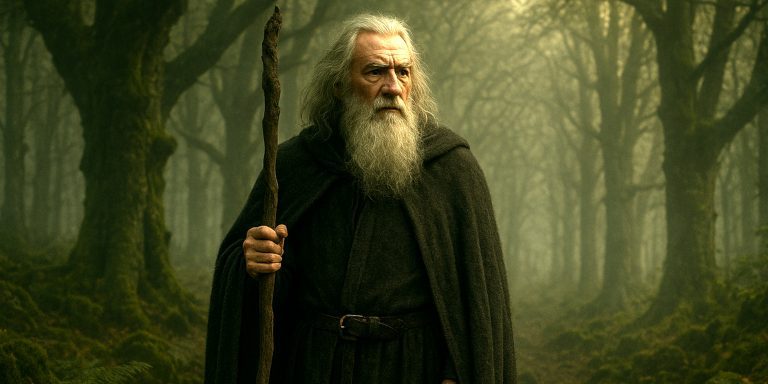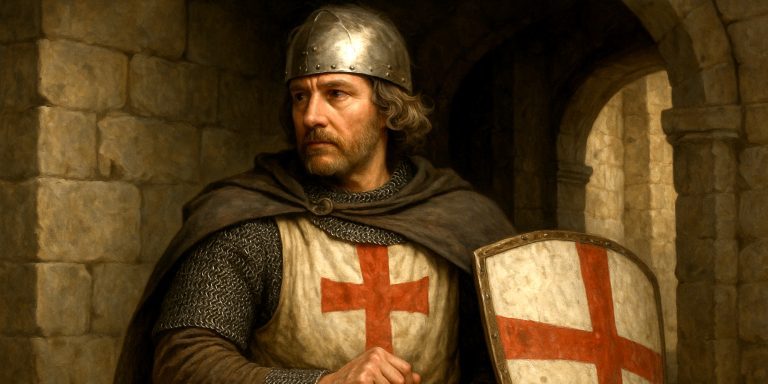
The Battle of the Boyne was a pivotal moment in Irish, British, and European history. Fought on 1 July 1690 (11 July in the modern Gregorian calendar), it saw the deposed Catholic King James II of England and Ireland face his Protestant son-in-law, King William III, who had taken the throne in the Glorious Revolution of 1688. Though the battle was not the bloodiest, its political and symbolic weight has echoed for centuries.
Forces
The armies at the Boyne represented not only two rival kings, but two broader religious and political worldviews: Catholic absolutism and Protestant constitutional monarchy. The battlefield lay near Drogheda, in County Meath, along the River Boyne.
Table: Leaders and Troop Composition
| Side | Monarch | Total Troops | Key Commanders | Notable Units |
|---|---|---|---|---|
| Williamite | William III (Prince of Orange) | Approx. 36,000 | Schomberg, Count Solms, General Douglas | Dutch Blue Guards, Danish infantry, Huguenot cavalry |
| Jacobite | James II | Approx. 25,000 | Richard Talbot (Earl of Tyrconnell), Patrick Sarsfield, Berwick | Irish Foot Regiments, French troops, Royal Irish Horse |
Arms and Armour
- Williamite Forces
- Muskets with plug bayonets becoming standard
- Flintlock pistols and carbines among cavalry
- Steel breastplates for some cavalry units
- Artillery: field pieces including 3 and 6-pounder guns
- Jacobite Forces
- Older matchlock muskets still in use
- Pike regiments used in support of musket lines
- French-supplied arms with varying quality
- Light artillery, but poorly equipped in comparison
Although the battle occurred at a transitional moment in military technology, most of the infantry combat was still linear musket fire, with cavalry skirmishes and artillery bombardments playing supporting roles.
Archaeology
Archaeological evidence around the Boyne Valley has confirmed the broad location of the battlefield, though exact troop movements remain debated. Finds include:
- Musket balls and gun flints near Oldbridge
- Pieces of uniform buttons and belt fittings
- Fragments of cannonball and shrapnel near river fords
The nearby Battle of the Boyne Visitor Centre offers artefacts and mapped interpretations of the battlefield, housed at Oldbridge House on the actual site.
Timeline of the Battle

| Time | Event |
|---|---|
| Early Morning | William’s army crosses the Boyne at various fords to outflank the Jacobite position |
| Midday | Main force crosses at Oldbridge; fierce firefight and hand-to-hand combat ensues |
| Afternoon | William’s flanking manoeuvre under Meinhardt Schomberg meets resistance at Donore |
| Late Afternoon | Jacobites begin strategic retreat towards Duleek, pursued but not routed |
| Evening | James flees to Dublin, then to France; his forces withdraw in relative order |
Contemporary Quotes
King William III, writing to Queen Mary after the battle:
“The enemy made some resistance, but at length gave way, and we routed them entirely.”
John Evelyn, English diarist:
“This victory was a great deliverance, and of great consequence, for it broke all the measures of the French in Ireland.”
Captain Parker, English officer present at the Boyne:
“Their foot stood not long, though their horse charged us fiercely. It was a fair field and hotly contested, but their hearts were not in it.”
Legacy
The Battle of the Boyne is remembered less for its military brilliance than for its political consequences. William’s victory ensured Protestant control over Ireland and solidified his reign in Britain. For Irish Catholics and Jacobites, it marked the beginning of a long period of dispossession and defeat.
In Northern Ireland, the date is still commemorated annually by Unionist communities on 12 July as part of the “Twelfth” celebrations, though the political context has evolved over time.
While the battle did not end the Williamite War in Ireland, it dealt a severe psychological blow to the Jacobite cause. James’s flight earned him the nickname “Séamus an Chaca” (James the Sh**ter) among his Irish supporters, reflecting the deep sense of betrayal felt by many who had pinned hopes on his cause.
Watch the documentary:



